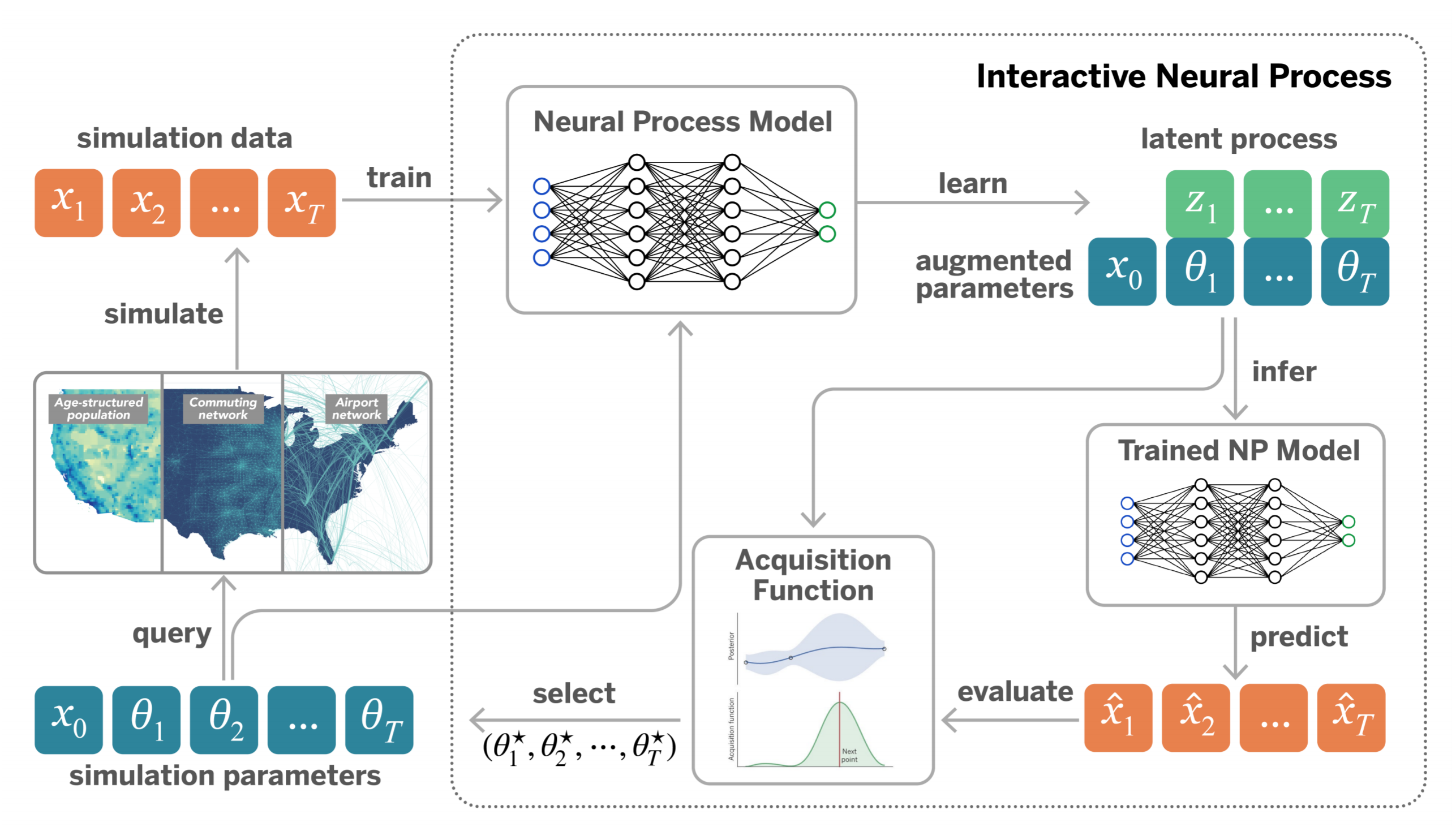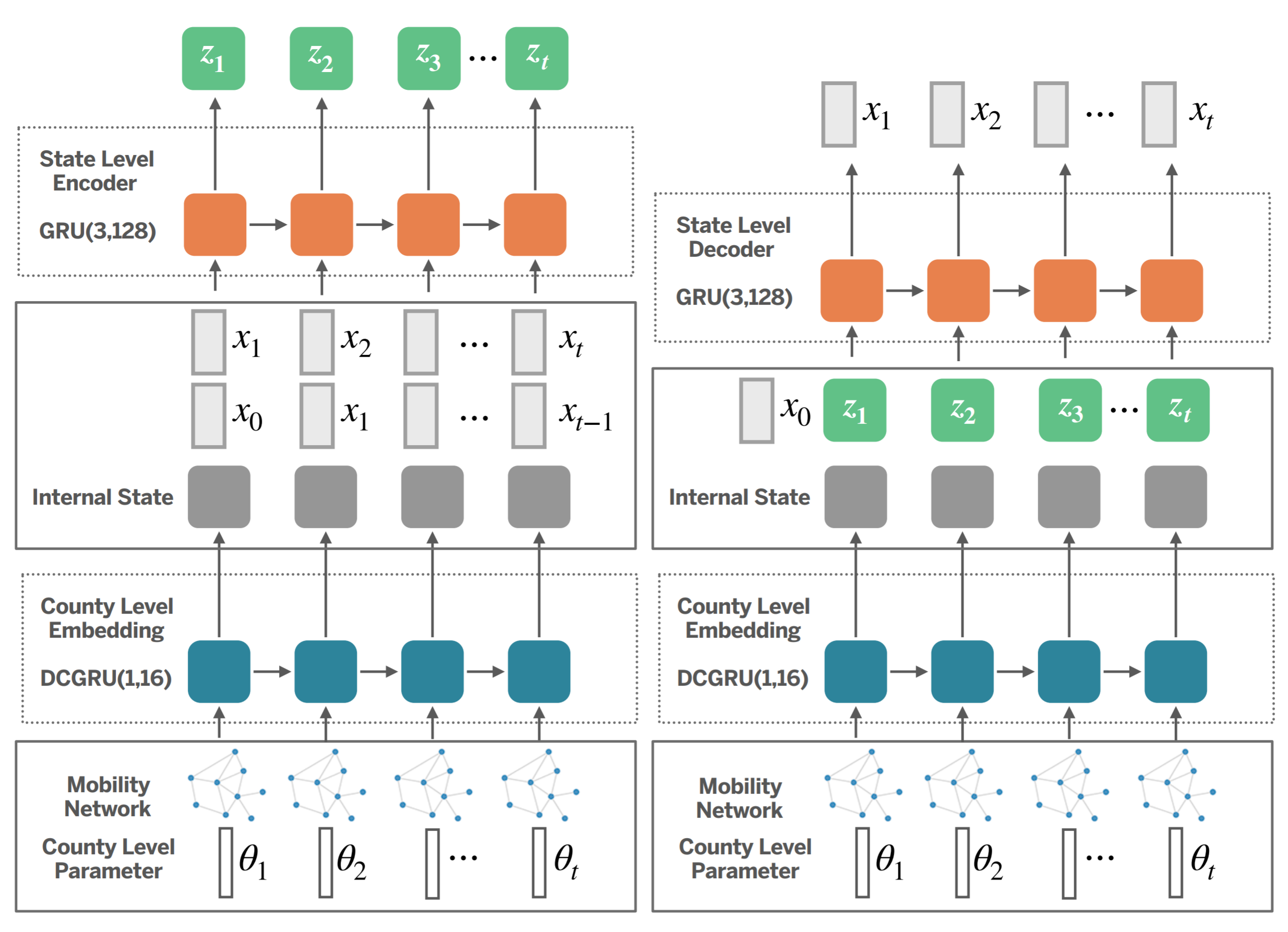Deep Learning + Epidemic Modeling


In this project, we combine traditional mechanistic epidemic models with state-of-the-art machine learning and deep learning approaches to: 1) improve epidemic forecasting; 2) accelerate large-scale stochastic simulations; and 3) reconstruct the early stages of an epidemic.
[Forecast] We combine the Global Epidemic and Mobility model (GLEAM) and the higher resolution Local Epidemic and Mobility model for the United States (LEAM-US) with state-of-the-art machine learning frameworks to enhance the prediction performance of the stand-alone mechanistic models by allowing to reduce the bias that exists between the model predictions and the observed noisy surveillance data.
[Accelerate] Stochastic simulations of large-scale, spatiotemporal, age-structured epidemic models are computationally expensive at fine-grained resolution. In this project, we develop a novel spatiotemporal neural process model to mimic LEAM-US dynamics. Our model automatically infers the latent process which describes the intrinsic uncertainty of the epidemic simulator. In practice, we demonstrate our framework can faithfully imitate the behavior of a complex infectious disease simulator with a small number of examples, enabling rapid simulation and scenario exploration.
[Reconstruct] Locating the source of an epidemic, or patient zero, can provide critical insights into the infection’s transmission course and allow efficient resource allocation. In this work, we establish a theoretical limit for the identification of patient zero in a class of epidemic models, and we evaluate our method against different epidemic models on both synthetic and a real-world contact network considering a disease with history and characteristics of COVID-19.
Online dashboards:
Papers:
Wu, D., Gao, L., Xiong, X., Chinazzi, M., Vespignani, A., Ma, Y.A., & Yu, R. Quantifying Uncertainty in Deep Spatiotemporal Forecasting (2021). ACM SIGKDD Conference on Knowledge Discovery and Data Mining (KDD), 2021.
Read paper hereWu, D., Chinazzi, M., Vespignani, A., Ma, Y. A., & Yu, R. (2021). Accelerating Stochastic Simulation with Interactive Neural Processes. arXiv preprint arXiv:2106.02770.
Read working paper hereWu, D., Gao, L., Xiong, X., Chinazzi, M., Vespignani, A., Ma, Y., & Yu, R. (2021). DeepGLEAM: a hybrid mechanistic and deep learning model for COVID-19 forecasting. arXiv preprint arXiv:2102.06684.
Read working paper hereShah, C., Dehmamy, N., Perra, N., Chinazzi, M., Barabási, A. L., Vespignani, A., & Yu, R. (2020). Finding Patient Zero: Learning Contagion Source with Graph Neural Networks. arXiv preprint arXiv:2006.11913.
Read working paper herePoirier, C., Liu, D., Clemente, L., Ding, X., Chinazzi, M., Davis, J.T., Vespignani, A., & Santillana, M. (2020). Real-time forecasting of the COVID-19 outbreak in Chinese provinces: machine learning approach using novel digital data and estimates from mechanistic models. Journal of Medical Internet Research, 22(8), e20285.
Read paper here
